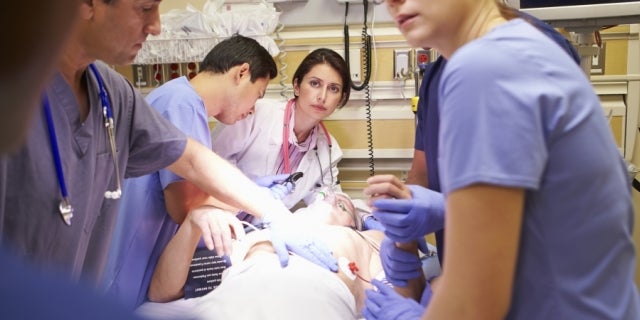One death every four minutes. The leading cause of disability in our country. A disease that can strike at any age. Stroke affects nearly 800,000 Americans every year, yet we are making a difference when it comes to saving lives. Over the last several decades, stroke has claimed fewer Americans - the death rate from stroke dropping 21 percent over the last 10 years alone. Stroke has slid from third to fourth among the leading causes of death in the U.S. Health care experts credit several factors - many within your control - for its continued decline. Are you doing all you can to prevent a stroke?
Lifestyle Changes May Stop Stroke
Stroke has been referred to a heart attack of the brain, sometimes called a brain attack. Most strokes occur when a blockage, such as a blood clot, limits oxygen-rich blood from reaching the brain. Some strokes are triggered by bleeding in the brain. In both cases, brain cells can die within minutes, leading to disability, temporary or permanent, and even death. When a stroke strikes, time is literally brain and immediate medical attention is required.
According to a recent study, stroke-related deaths have fallen by 33 percent since 2000. Better blood pressure control may account for much of this drop, researchers believe. The reason? High blood pressure puts you most at risk for a stroke. In fact, you are four times more likely to suffer a stroke if you have the condition. Many Americans are aware of this connection, are working with their health care providers to make changes, including taking medication and lifestyle modifications to better manage their blood pressure.
Other factors may also be contributing to the lower number of strokes. Fewer Americans are lighting up than in the past, while more are exercising and controlling their cholesterol levels. Conditions like Atrial Fibrillation (AFib) increase your risk of having a stroke. If you have been diagnosed with AFib, it is important to talk with your health care provider about treatment options available to reduce that risk. Better coordinated care for stroke is helping, as well. The Oklahoma Stroke & Neurological Institute (OSNI) at Hillcrest Medical Center provides a multi-disciplinary stroke team to assess and treat all stroke patients. Even prior to arrival in the Emergency Center, the stroke team is activated by paramedics in the field to be prepared for a potential stroke patient’s arrival. Stroke patients are less likely to die or suffer major disability if they receive timely treatment.
Not All Good News, Though
Stroke may be affecting fewer adults. However, some groups aren't faring as well. In particular, people with diabetes face a higher risk for stroke, especially if they have high blood pressure. Past research has tracked an uptick in emergency stroke care for people with the disease. Even more concerning: A greater number of Americans are developing diabetes.
Younger adults may also become more prone to stroke. In general, your chance for a stroke increases as you grow older. Yet 15 percent of strokes occur in adolescents and those younger than age 55. In a recent study of more than 5,000 younger stroke survivors, unhealthy lifestyle habits, such as smoking and a lack of physical activity, were a common cause.
Awareness about stroke tends to be lower among younger people, too. They may not think it can happen to them. What's more, stroke symptoms may be more difficult to identify and diagnose in younger patients. Another worrisome fact: Suffering a stroke at a younger age can result in many more years of disability.
Are you at risk for a stroke? Click here to find out more.
The Signs of Stroke
FAST, an acronym to identify signs of a stroke, treatment is crucial if you or a loved one suffers a stroke. Recognizing the symptoms of a stroke can help curtail disability and death. Seek emergency care immediately if you notice these signs of a stroke:
Face - When the person smiles, does their face move in the same way on both sides?
Arms - Hold the arms out. Can they hold both arms out at the same time and do they stay together?
Speech - Have them say a sentence. Does it come out clearly? Do they slur their speech?
Time - Intervene quickly and know what time the symptoms began. Health care providers are on the clock to begin treatment once symptoms start.
The Oklahoma Stroke & Neurological Institute at Hillcrest Medical Center offers an 18-bed stroke unit with a specially trained, rapid response team ready to provide expert care for someone who may be having a stroke. Click here to learn more.

